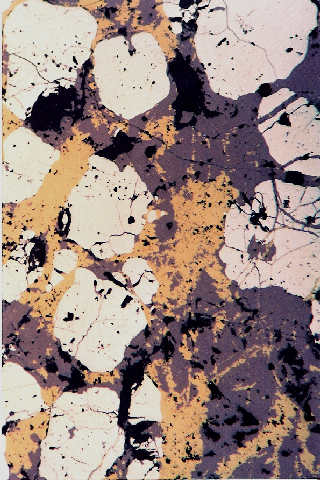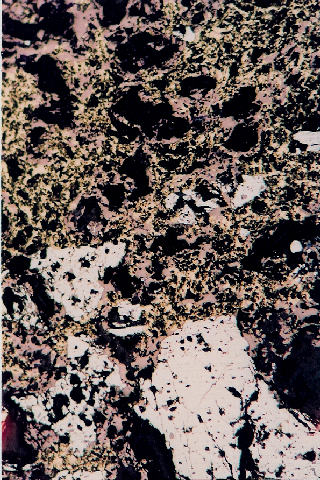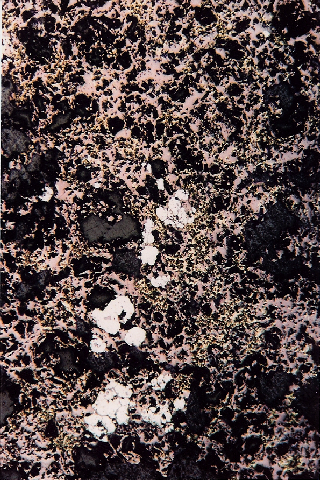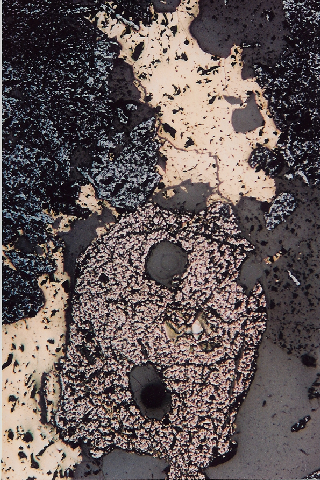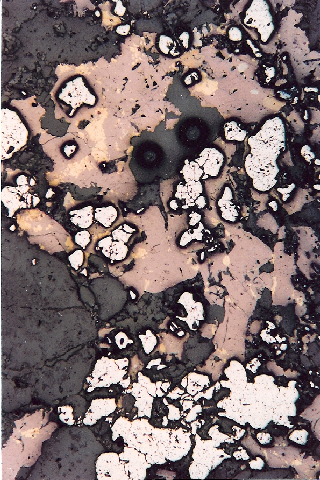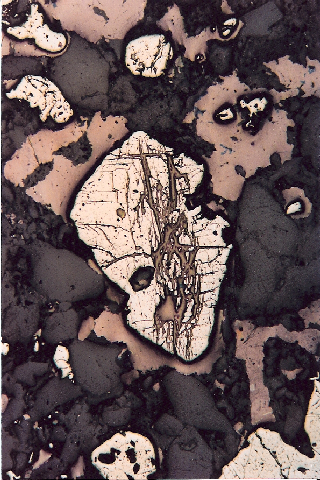
|
|||||||||||||
| Reflections & Comparisons Several years ago, one of our grad student customers performed an informal survey and sent duplicate sets of ore samples to "several reputable thin section makers" and to a university facility in China. "I specifically chose difficult samples to polish", he wrote. For the benifit of his fellow students, he summarized the results in poster form, which included several reflected-light images for comparison purposes. He was kind enough to share a few copies of these photomicrographs with us, along with his comments. The image below on the left is one of our polished thin sections. It is one of the ore samples included in the survey set from the Magma Mine in Superior, Arizona. Minerals present in this view (and the other photos) are bornite (purplish-tan), chalcopyrite (yellow), pyrite (white), and quartz (gray). Voids and pits appear black. "...[in the Burnham section] mineral boundaries are clearly visible and mineral identification is straight-forward. Minor phases such as the silver hematite grains in some of the smallest veins are obvious. Pyrite not scratched. Appropriate amount of relief (i.e. minimal)." Compare our section on the left to that of a competitor�s on the right: |
|||||||||||||
|
|||||||||||||
|
More examples of poor-quality work:
|
|||||||||||||
| The two images above are of thin sections prepared in China ... "their methods are not appropriate for sulfide-bearing samples," our customer states. "Note the dark shadows surrounding the hard pyrite and quartz ....While minimal relief is useful for mineral identification in reflected light, extreme relief like this obscures mineral boundary relations." | |||||||||||||
| Home | |||||||||||||
|
©2025 Burnham Petrographics LLC
This page was last updated on 03/30/2025 06:14:38 |
|||||||||||||
